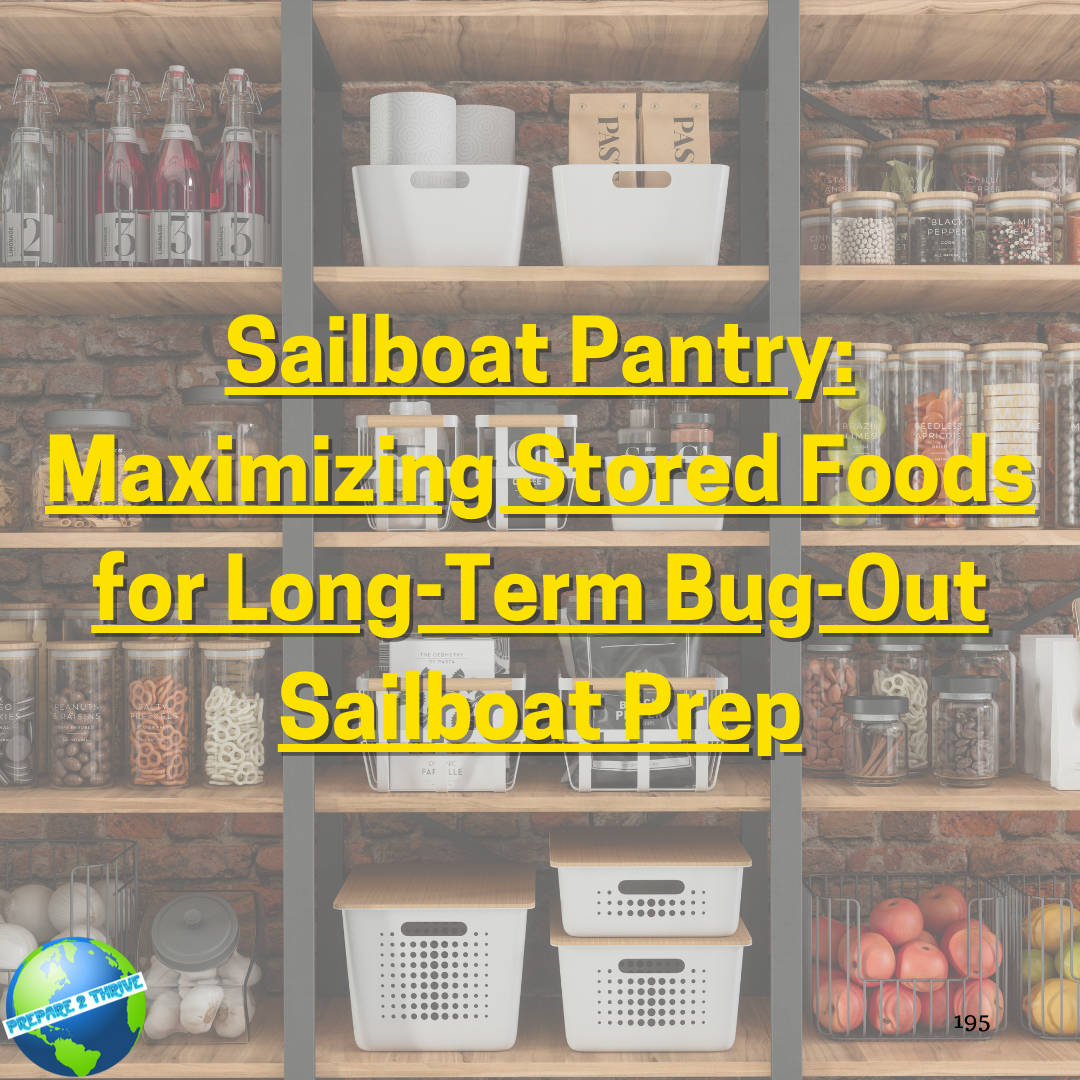Introduction
Bug-out sailboat prep is a way to be prepared for any emergency scenarios that might arise. Every boat owner should have enough food and water stored on their vessel to sustain them if needed. But long-term boat storage presents a unique challenge - how can you maintain a good store of non-perishable food items for extended periods that won’t spoil or take up too much space? The key is to make use of the sailboat pantry.
In this article, we’ll explore the concept of a sailboat pantry and its importance in long-term bug-out boat prepping. We’ll look at the types of food to store, long-term food storage techniques, and how to maximize the amount of food stored in limited space. Read on to get the scoop on sailboat food storage and see how you can be ready to go in case of emergencies.
Importance of Storing Food on a Boat
Having enough food on board is one of the most important things to prepare for emergencies. Not only can you keep yourself and your crew nourished and fueled, but you can ensure the safety of your boat and prevent any fires or explosions. On a bug-out boat, food storage can also make it easier to get out of a dangerous situation quickly and with minimal resources.
During emergencies, food shortages can be common and can prove to be a serious obstacle in evacuations. Having non-perishable food items on board can help get you through shortages. Furthermore, depending on where your yacht is located, you might need to take it to nearby ports or marinas to get food or other supplies. To help in these situations, it’s wise to store enough food items on board to last for the duration of the trip.
Types of Food to Store on a Boat
The types of food to store on a boat will depend on the size of the boat, its purpose, and the number of people and meals it needs to sustain. But some basic items to keep in storage include rice, canned goods, dry goods, grains, dried fruit, nuts, seeds, and legumes.
Canned goods are a good choice for a sailboat pantry because they are safe to store for long periods of time and can take up limited space. Canned items such as tuna, salmon, vegetables, soups, and fruits can provide essential vitamins and nutrients, as well as a variety of flavors. Dry goods such as flour, sugar, and cereals can also help provide carbohydrates for energy needs. Grains such as quinoa, wheat berries, and oats are ideal for making hearty meals and can also be stored for long periods.
Dehydrated fruits and vegetables can provide essential vitamins and minerals, and nuts and seeds can supply proteins and healthy fats. Legumes, such as lentils, chickpeas, and black-eyed peas, are a great way to get protein and fiber, and they can be stored for long periods of time.
Long-Term Food Storage Tips
When it comes to long-term food storage on a boat, there are several ways to maximize the amount of food stored without compromising nutrition or flavor. Here are some of the most important tips:
- To maximize the shelf life of perishable food items such as vegetables, consider using a vacuum sealer. This removes air from plastic bags and containers, which helps to keep food fresher for longer.
- Choose long-lasting, non-perishable food items to store in the pantry. Canned goods, dry goods, grains, and legumes are excellent choices, and some of them can last up to five years in storage.
- Organize your pantry along with an inventory of all stored items, including expiration dates. This will help keep track of the food that needs to be consumed soon and avoid any spoilage accident.
- Check stored items regularly and rotate rotating your prepped food. Doing this can help reduce waste and ensure that all the food stored in the pantry is of the highest quality.
Maximizing Stored Foods for Maximum Space
Space is a valuable commodity on most sailboats. That’s why it’s important to maximize stored food to make the most of the available room. Here are some tips:
- Pack items tightly and securely into air-tight containers, bins, bags, or boxes. This can minimize the amount of wasted space and make it easier to organize the pantry.
- Choose packaging that is lightweight and made of food-grade materials. Plastic containers and Mylar bags are great choices for long-term storage.
- Make use of every available space on the boat for storage. Overhead lockers, wall-mounted racks, cabinets, and drawers can all be used to store food items.
- Opt for pre-packaged items that contain small portions. These can help reduce the storage space needed and still provide enough nutrition for your needs.
- Store food items that don’t require refrigeration. Canned goods, grains, and beans are all excellent choices that can be stored safely.
Conclusion
Having a well-stocked sailing pantry is essential for bug-out boat prep. Storing the right kinds of foods and making use of long-term storage techniques will help ensure that you have the necessary nutrients and calories in case of emergencies. It’s also important to make use of your boat’s available storage space and pack items tightly and securely. With these tips, you can rest assured that you have the sustenance and fuel needed to keep your crew safe during long-term sailing trips.
#SailboatPantry #BugOutBoatPrep #LongTermFoodStorage #CannedGoods #Grains #DehydratedFood #VacuumSealer #FoodPackaging

